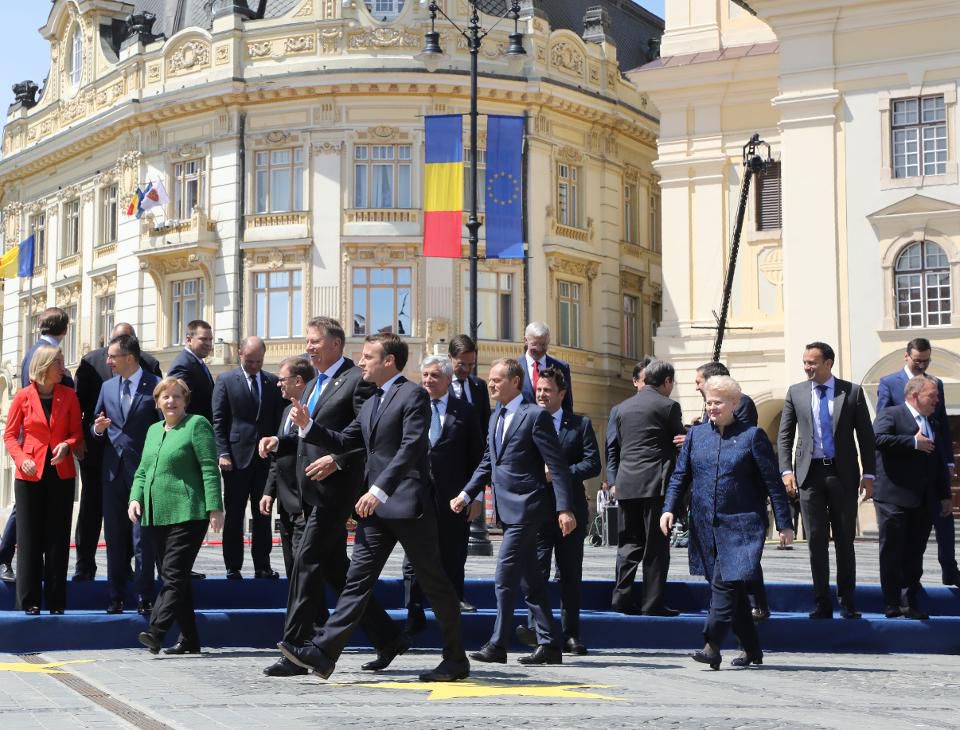9 May Sibiu, Romania
EU leaders meet shortly in Sibiu, Romania, to discuss the Future of Europe. As well as the Brexit elephant in the room, discussions will unfold on the highest priority topics which are likely to dominate both the upcoming European elections and the new Commission mandate later in 2019: defence, economic and monetary policy, the social dimension – and, sustainability.
Institutional investors – the pension funds and asset managers directing trillions of euros with a view to ensuring sound financial returns for their beneficiaries – will be closely watching the sustainability debate. This is because investors recognise the significant risks posed by climate change, as well as the enormous economic opportunities provided by low-carbon and climate-resilient technologies, markets and business models. For these reasons, a growing number of investors are already stepping up their commitments to sustainable and responsible investment, as well as putting pressure on high-emitting companies.
But investors also look to policy-makers to enable the scaling up and acceleration of this action with the right policy frameworks. Clear, long-term legislative programmes are critical to the ability of investors to assess and manage climate-related risks, to support innovation and invest in opportunities that will sustain a low-carbon, more energy efficient and climate-resilient world.
A cornerstone of the EU’s future legislative programme will be the Strategy for Long-Term Greenhouse Gas Emissions Reduction 2050. When the European Commission published the precursor to this – the strategic vision on – in November 2018, investors welcomed the opportunity for a discussion on how to align all relevant EU policy frameworks with the goals of the Paris Agreement, as a way to send the most positive investment signals possible. The stakes here are not insignificant. The European Commission itself acknowledges that even to meet current climate and energy targets, €180 billion per annum in additional investment will be required.
It is the interdependent but sometimes overlooked nature of the relationship between climate change and private finance which investors are now asking leaders to focus on in Sibiu. If investors are to be confident in the EU’s long-standing commitment to tackling climate change, there are key elements that the Long Term Strategy must cover.
Key to the strategy must be an unqualified decarbonisation objective for the EU to achieve net-zero emissions by 2050 at the latest. The science is clear that any later will not be consistent with the Paris Agreement’s goals and will therefore lock in catastrophic levels of climate change.
But high-level targets are not enough – investors need to know how policy-makers intend to implement their plans. This is why the net-zero objective must be underpinned by a holistic strategy in which all sectors, instruments and actors play a fair role. This will cut across industrial policy, R&D and innovation frameworks and financial instruments.
Difficult discussions will also be required on how to increase and strengthen the EU’s existing 2030 climate and energy targets, as well as how to assess new EU policies and investment decisions, to ensure the full alignment of both with the new net-zero objective.
A final consideration for leaders in Sibiu will be the role of the EU in an increasingly globalised world. The EU is expected to be the first major power globally to adopt such a strategy, and show it is possible to achieve a strong and prosperous net-zero emissions economy by 2050. As such, the eyes of the world are on the EU at a vital stage in the international climate change process, especially given the run-up to the UN Secretary General’s Climate Action Summit.
A lot rests on the ambition, credibility and success of the EU’s approach to climate change which leaders will be discussing in Romania. The opportunity for the EU in Sibiu to show its partners what climate change leadership looks like is clear. Investors are urging leaders to seize it.
Conclusions after the Summit of Sibiu
A “future of Europe” summit of 27 of the European Union’s 28 national leaders in Sibiu, Romania ended today with no declaration on fighting climate change, as had been hoped for by eight countries including France, Spain and the Netherlands.
The summit was scheduled two years ago by EU Commission President Jean-Claude Juncker, intended to plot the EU’s future after Brexit, which was meant to take place on March 30th. With Brexit now in doubt, the 27 other EU countries nonetheless decided to go ahead with the summit and did not invite British Prime Minister Theresa May.
The 27 leaders adopted a set of ten general conclusions for the EU’s future. The declaration concludes with the line, “A new Union at 27 is ready to embrace its future as one.”
The group of eight countries, which also includes Belgium, Denmark, Luxembourg, Portugal and Sweden, wrote to all of the leaders ahead of the summit asking for them to commit to adopting the European Commission’s proposal to reduce emissions to “net zero” – a 95% reduction with the remainder being made up for by reducing emissions outside Europe – by 2050. They also want 25% of the EU’s next long-term budget to be devoted to fighting climate change.
The proposal is set to be voted on at a European Council summit next month, but the eight countries said an early commitment to adopt the target would send a signal that the bloc sees fighting climate change as a key part of its future.




